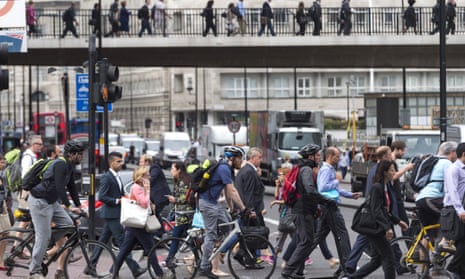The frenetic, isolating nature of city life can be a day-to-day struggle for millions of people. An environmental cocktail of densely packed streets and homes, cramped and lengthy commutes and noise pollution as well as significant pockets of poverty and deprivation can take their toll. As a result, mental ill health and urban life are inextricably linked.
With urban areas expected to house two-thirds of the world’s population by 2050 and some cities, such as in China, undergoing unprecedented expansion, the relationship between urban environments and mental health – and what to do about it – is rapidly coming to the fore.
“Public health is an important component of the built environment, but all too often this focuses only on physical health,” says Layla McCay, founder and director of the Centre for Urban Development and Mental Health. The thinktank was set up in 2015 to bring together researchers, policymakers and planners across the globe to push for urban space designs that create mentally healthier cities.
Projects paving the way
A well-designed urban space can have a positive influence on people’s wellbeing and help prevent mental health problems developing or becoming worse, according to McCay.
“Mental health plays a huge role in the overall burden of disease around the entire world,” she says. “It’s prevalent in every country. The statistics do tell us that people who live in cities have a 40% increased risk of depression, a 20% increased risk of anxiety and double the risk of schizophrenia.”
So far, projects paving the way have tended to be small. Examples include one in Sheffield, England, says McCay, where a green space parks initiative, the Improving Wellbeing Through Urban Nature project, is aiming to promote well-designed urban green spaces as a cost-effective way to boost mental and physical health. Another is the network of Dementia Friendly Communities across the UK.
Urban living takes its toll
There is a considerable body of evidence (pdf) internationally suggesting that urban living, especially poorly designed environments, can have negative effects on mental health. For example, substandard, overcrowded, damp housing has been proven to affect people’s capacity to cope, while the lack of something as basic as a play area can influence children’s wellbeing.
Meanwhile, compared with non-urban areas, cities around the world have an increased prevalence of acute mental illnesses, as well as other problems such as stress and isolation.
A recent report (pdf) from the Mental Health Foundation (MHF) in the UK concluded that cities becoming more crowded and the rising proportion of people living alone (up from 6% in 1972 to 12% in 2008) contributes to higher levels of loneliness, which is a risk factor for mental ill health.
Another study, Poverty and Mental Health, published by the MHF for the Joseph Rowntree Foundation emphasised the adverse connections between mental health and deprivation, which tends to be most concentrated in urban areas. The report’s recommendations included that policymakers consider mental health as a core part of the urban planning process, saying it “should be promoted as good practice”.
The role of planners and architects
It makes sense, McCay says, to take into account, for example, that improving street lighting and housing layout might reduce fear and anxiety about safety. The same goes for using urban design to produce plentiful open, green spaces (pdf) that encourage regular interaction in “pro-social spaces” and “a sense of community” with the goal of reducing isolation.
“[There] is a real opportunity for people who work in the planning, architecture and urban-focused professions to have an impact on mental health,” she adds.
Experts at the WHO Collaborating Centre for Healthy Urban Environments at the University of the West of England (UWE), which works in tandem with the World Health Organisation’s international Healthy Cities Project, concur that urban planning could have a substantial role to play in cities being designed with mental wellbeing in mind.
Sarah Burgess, senior lecturer in the department of architecture and built environment at UWE, says there is definitely momentum towards mental wellness becoming a greater priority for planners globally. She points to the popularity of happiness indices internationally and to initiatives such as Happy City in Canada, which promotes wellbeing as a legitimate goal of urban design, as examples of a growing appetite for new approaches.
But when it comes to individual cities spearheading attempts to put mental wellbeing at the centre of planning strategies, Burgess concludes that they are rare.
According to Daniel Black, an urban planner and fellow at the WHO Collaborating Centre, while planning professionals and researchers are increasingly becoming advocates for prioritising mental health in planning decisions, there is still some way to go before decision-makers in governments catch up.
“Mental health is still lagging behind,” he says. “Even physical health is only beginning to get on the radar. How those in control of urban development are integrating health into development is negligible.”
Talk to us on Twitter via @Guardianpublic and sign up for your free weekly Guardian Public Leaders newsletter with news and analysis sent direct to you every Thursday.

Comments (…)
Sign in or create your Guardian account to join the discussion